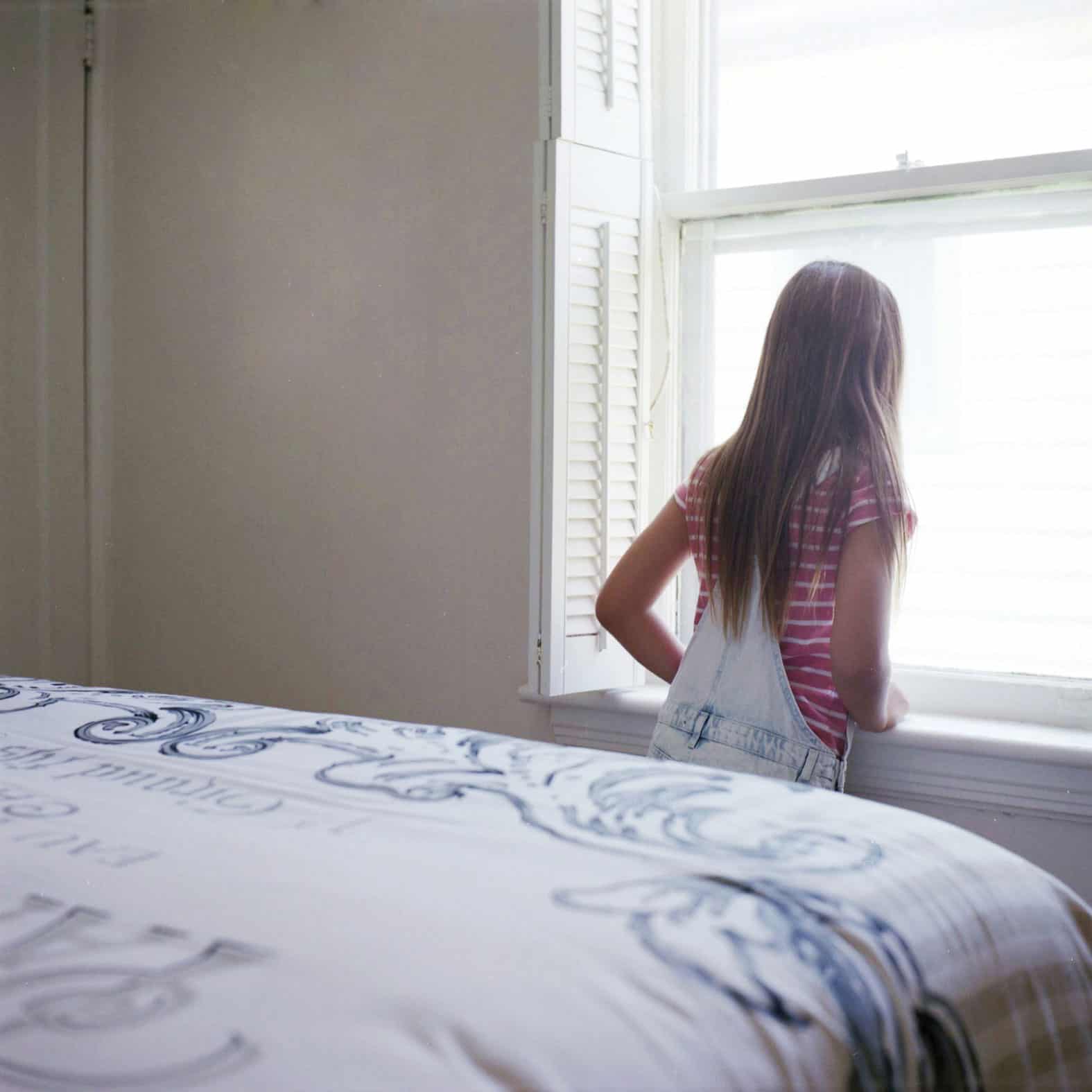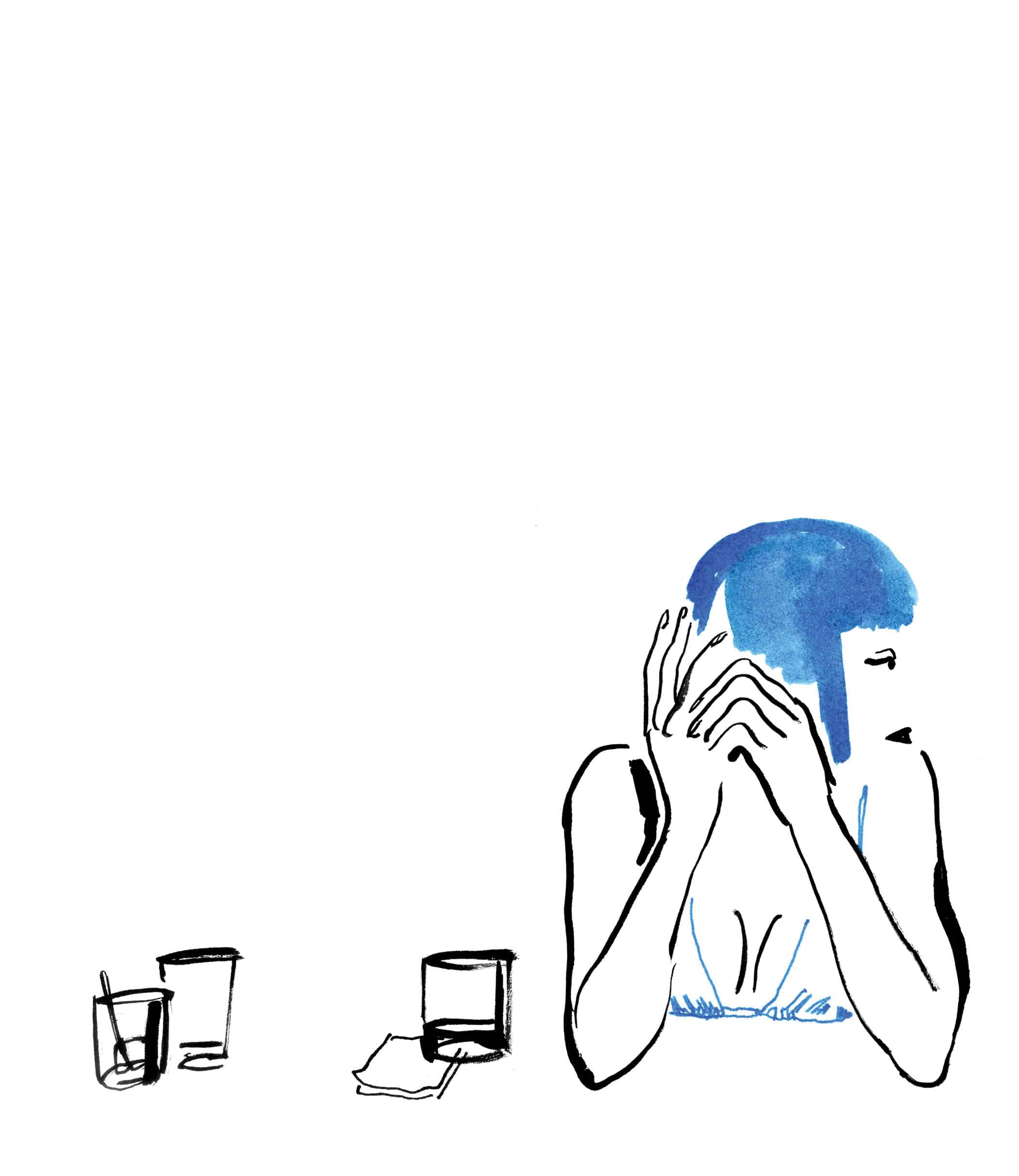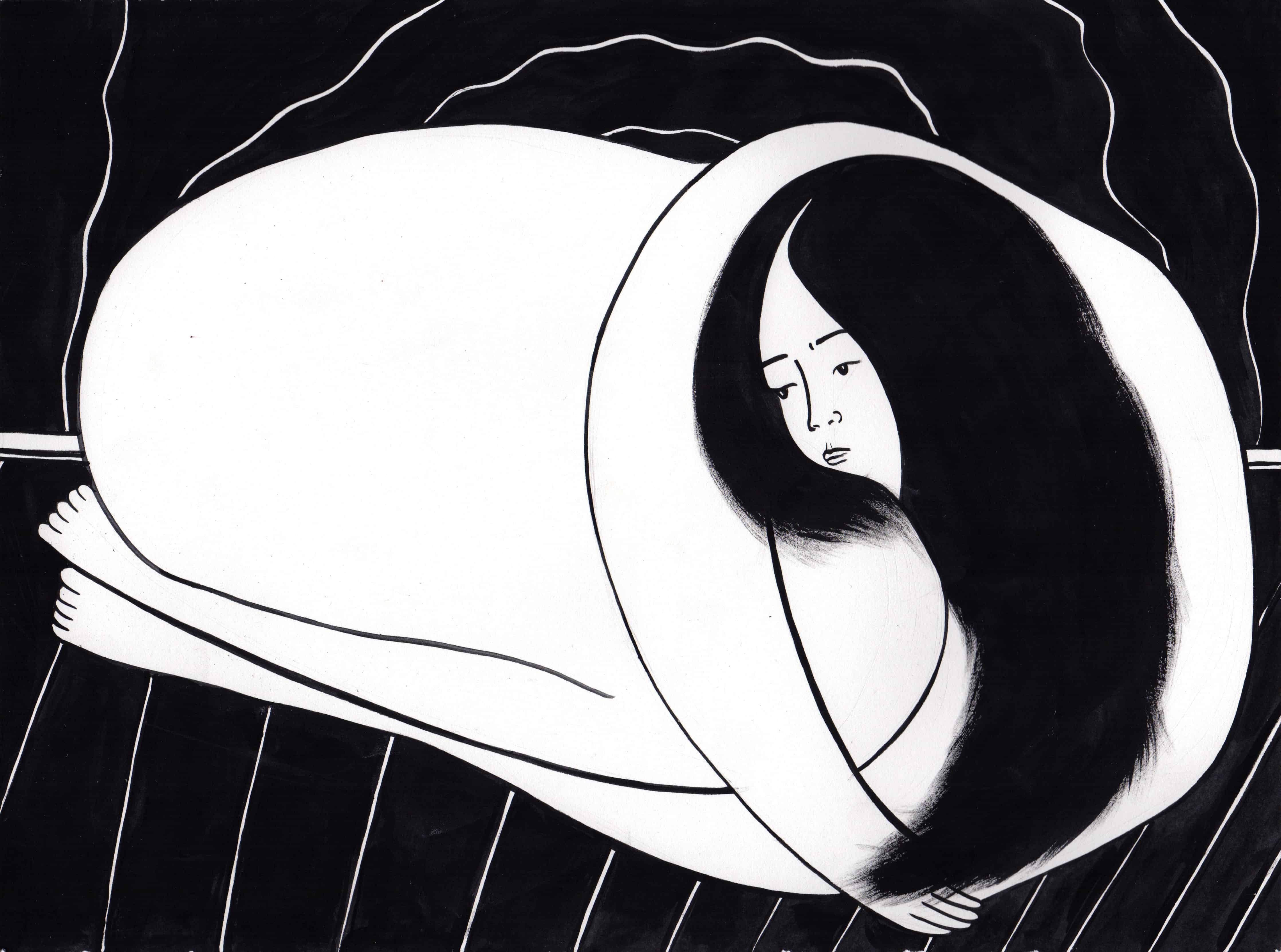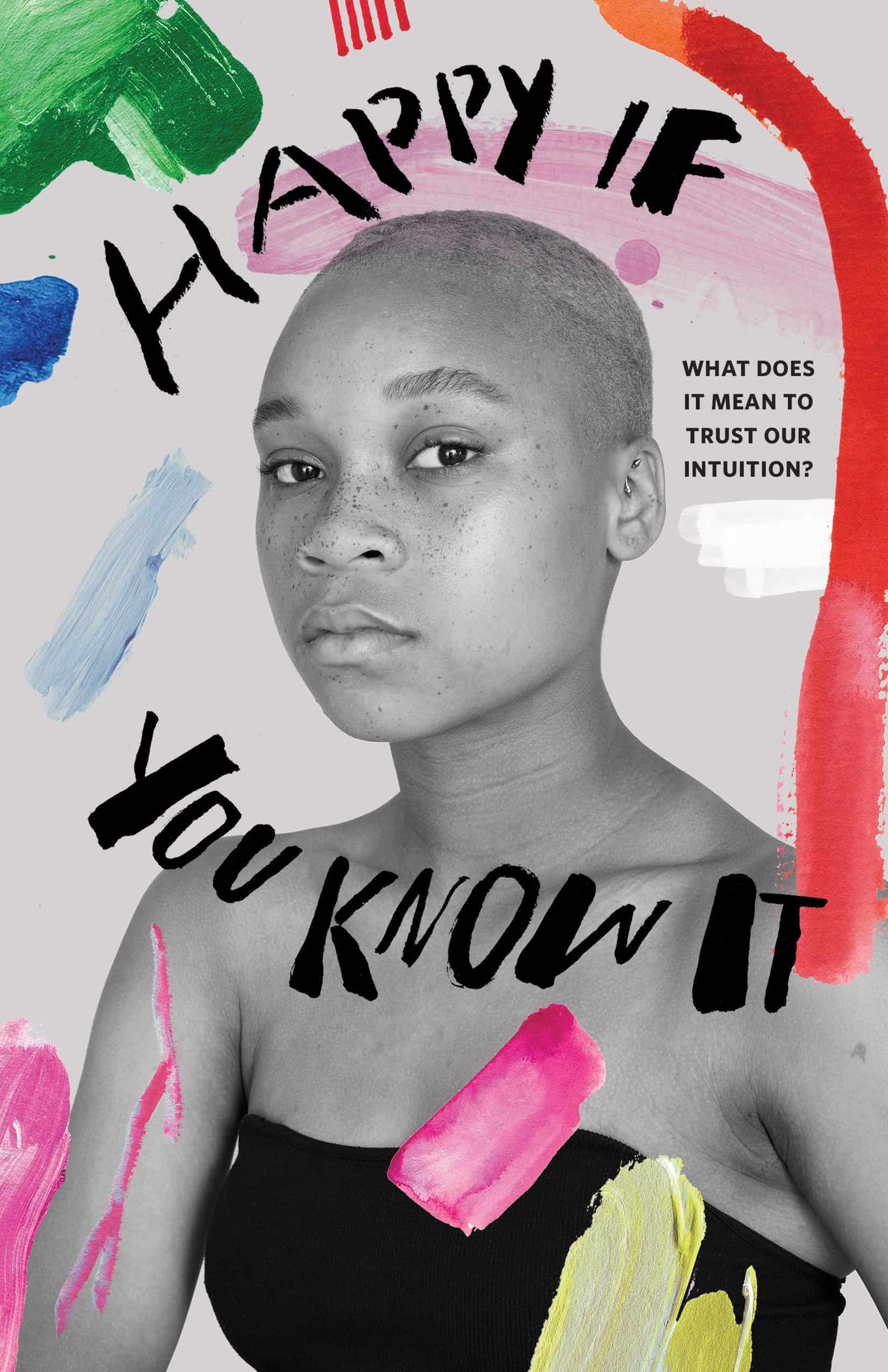Out this month is a brand new anthology from With/out Pretend: Happy If You Know It, which features reflections from female-identifying artists and writers on the subject of intuition.
Featuring work by Najla Nubyanluv, Liz Worth, Anne Thériault, Vasiliki Maracas, Frankie Barnet, Carleigh Baker, Lauren Tamaki, Alexandra Bowman, Jill Andrew, Aisha Fairclough, Hollie Pocsai, Ness Lee, Vivek Shraya, Tania Love and Margaux Williamson, the question of intuition will be grounded in personal narrative and explored though poetry, essay, short fiction, illustration and photography.
The Happy If You Know It official launch party is happening at The Garrison (1197 Dundas St) on November 22nd.
Hollie Pocsai, Artist

Pleasant Valley by Hollie Pocsai
SDTC: How do you trust your intuition?
HP: Sometimes I think it’s actually a little hard for me to disconnect my intuition from my decision making. It’s hard to describe, except to say that I just know I need to make a certain action, or go a certain route, and I’ll get my desired results. It’s like a pulse running through my body that I can’t ignore. I’ve been described as impulsive, or headstrong, which are fair assessments, but that’s not to say I don’t make informed decisions. They are emotionally methodical decisions, which I value very much.
What was the best advice you’ve received as an artist?
Get to work.
If you could go back in time, what would you tell your fourteen-year-old self?
You don’t need to take on the emotions of others. Recognize the importance of feeling deeply, but figure out which ones are truly yours and nourish them. You’re doing great.
Art is?
Essential.
What can people expect to see from you for Happy If You Know It?
For Happy If You Know It, I worked with my nine-year-old niece, Norelle, to produce a series of film photographs based around my experience of moving to a suburb called Pleasant Valley when I was about her age. I focused on this time in my life because it’s when I can first pinpoint feeling those kind of big, existential questions about life, and a kind of heaviness about recognizing sadness in the world.
It’s a really pretty suburb surrounded by ravines, but there was this loneliness that lingered there. It’s so cliche, even the name, but there was a lot of breakdown and secrets in my family at the time, which really conflicted me as a child since I was surrounded by – and had to keep up the appearance of – perfection. But, I think that it ultimately showed me first-hand how things can collapse if you don’t fully trust your emotional responses.
Vivek Shraya, Writer & Artist

Illustration by Lauren Tamaki
SDTC: Do you trust your intuition?
VS: My job as an artist is to trust my intuition, which usually sounds like a voice in my head.
What can people expect to see from you for Happy If You Know It?
My contribution is a poem that tries to convey the multi-sided impact of (and deliberately cultivated paranoia from) systemic racism.
What was the best advice you’ve received as an artist?
You have to make the bad art to get to the place of making good art.
If you could go back in time, what would you tell your fourteen-year-old self?
No one knows you better than you know yourself. (Or: Trust your intuition!)
Art is?
The reason I wake up every morning.
Erin Klassen, Founder of With/out Pretend (the publishing company behind Happy If You Know It)

Image by Ness Lee
What was behind your decision in making intuition the central focus of this book?
I’m drawn to topics and themes that sound simple on the surface but are actually incredibly complex. I started out thinking we were going to make a book about dysfunction — the places and relationships and thought patterns we sometimes find ourselves in that make us wonder, how did we get here?
From there, the theme of intuition emerged, because that’s supposed to be the answer. We’re all born with self-protective instincts, but we don’t always tap into them, do we? I wanted to ask artists and writers I admired to help me explore that contradiction.
Did anything surprise you among the different artists’ submissions?
The most exciting part about making these anthology-style books is how they slowly take shape through collaboration. Jen Spinner (Art Director) and I start by curating a list of potential contributors for the book after we’ve settled on the themes and then I reach out to invite them all individually. With the exception of Vivek (whose poem was previously published in her book even this page is white by Arsenal Pulp) contributors made new work for this anthology based on the same list of guiding questions, namely, “What does it mean to trust your intuition?”
I try to prioritize a diverse group of contributors and types of formats, because I like to see how the same theme can be dissected and expressed through different media. I’m over the moon about all of the contributions, but I’m especially excited about Margaux Williamson’s piece of propaganda called “How To Be A Villain,” which will be part of the book as a pull-out poster. She’s an artist I really look up to because she’s constantly trying new things in her work. She’s a painter, a filmmaker, she used to write movie reviews…and then she makes these great propaganda-style pamphlets and posters (she did one for Women In Clothes a couple of years ago) that are thoughtful and dark and kind of funny, too. When she agreed to be in the book it was a pretty good day. She said something like, “I’m usually very good at saying no to things but for some reason this seems fun and good.”
Every single one of the contributors brought their A game, and I feel incredibly honoured to have had the chance to work with them. Najla Nubyanluv and Frankie Barnet are two to watch out for. Frankie is an incredible fiction writer and I’m certain she’s going to be a big deal one day soon. Najla is the artist-in-residence at The Watah Theatre (run by D’bi Young Anitafrika). She’s a unique playwright and performer and she has so much heart it jumps off the page. I hope readers are intrigued enough to check out more of her work, or see one of her plays live.
What did you learn about intuition in the process of putting this book together?
Making a book is like six months of intense therapy and everything that comes with that. There’s so much realness and honesty in this book and that inspires me to cut through some of my own manufactured bullshit about who I’m supposed to be or what I’m supposed to be doing.
How has your own intuition factored into your own life decisions?
Getting older has helped, because I have a larger data set, more examples to look at to see where I should have listened to my gut and not to the louder voice in my head that sounds like a group of bullies on the playground. One of the contributors, Jill Andrew, talks about the dangers of “shoulda coulda woulda” in her essay and I think those words are especially loaded for me. Regret can be powerful, but learning to trust your intuition is really a process of trial and error. When you get it “wrong” you learn something. When you get it “right” you learn something. I think it’s always felt complicated to me, sorting out the wrong from the right, but it’s getting clearer.
Does following one’s intuition result in more happiness?
I think the easy answer is yes, but I tend to look at things in shades of grey. Sometimes the things that make us happy aren’t always the things that are good for us in the long run. Sometimes the things that are right for us won’t make us happy in the short term. So it’s important to think about these big subjects, and get to know ourselves, and work toward what “happy” means to us as individuals and also within our communities, cities, countries. I hope this book sparks some of that kind of thinking in readers. Art always helps me!



 Follow Us On Instagram
Follow Us On Instagram
